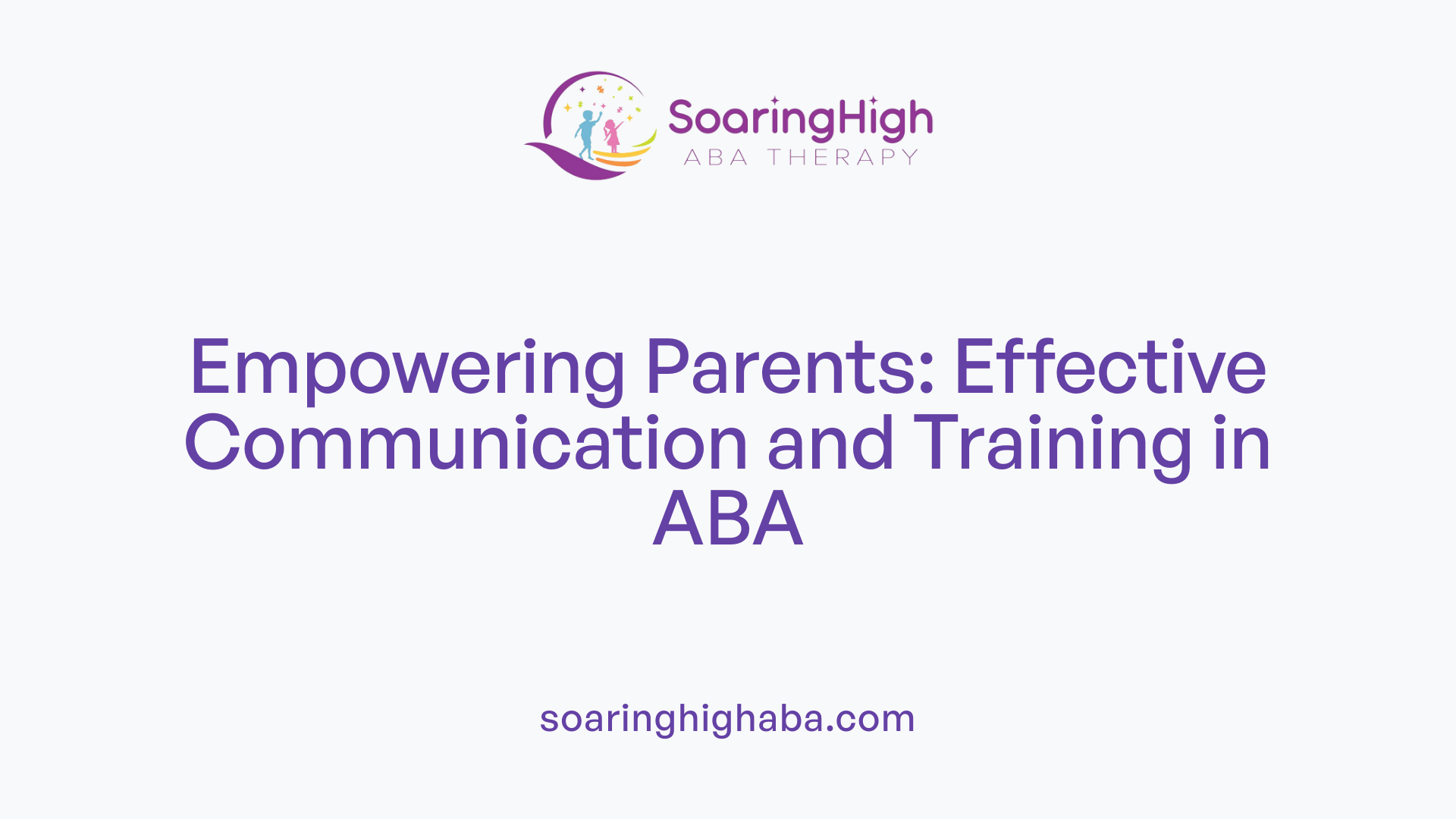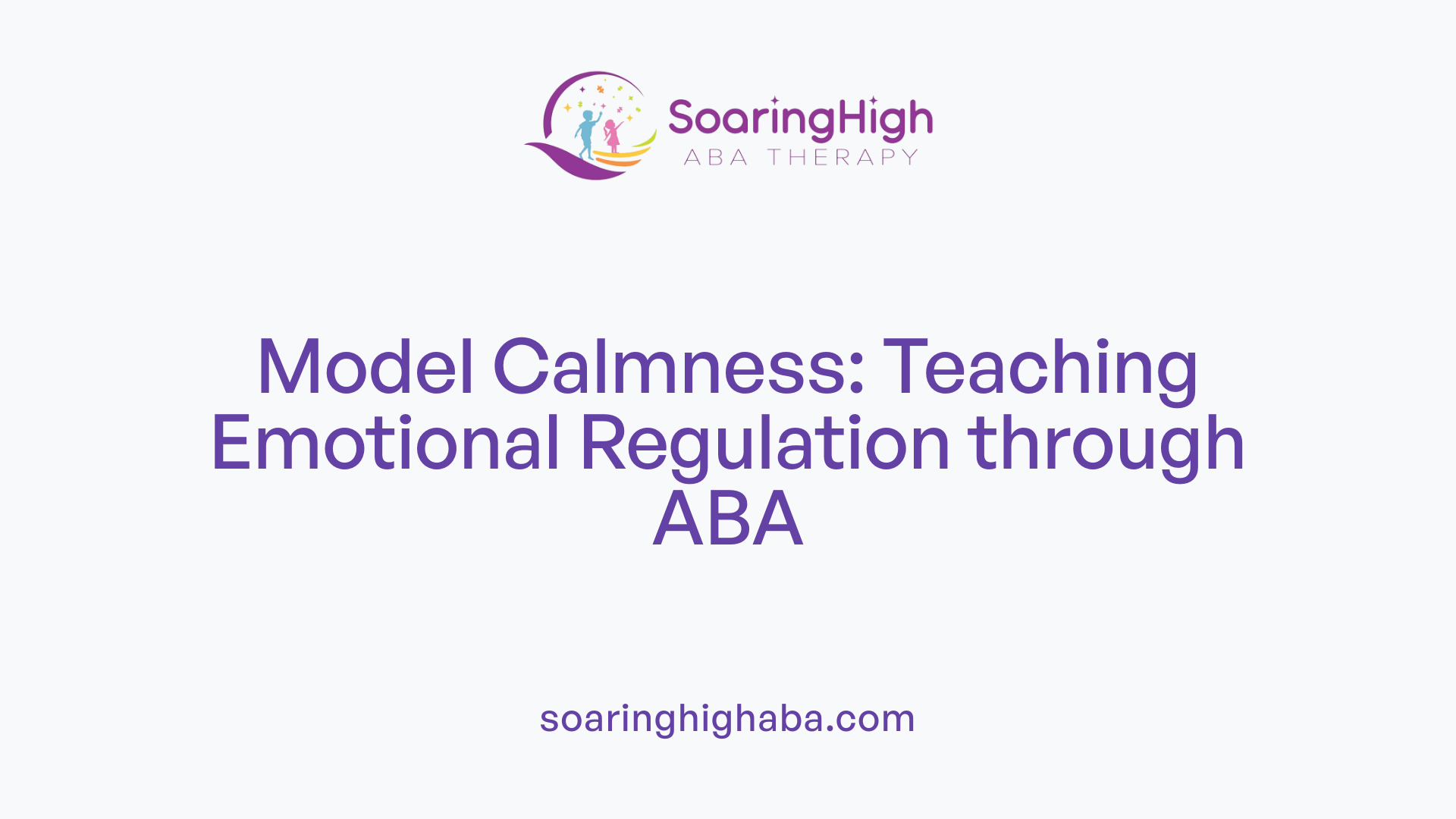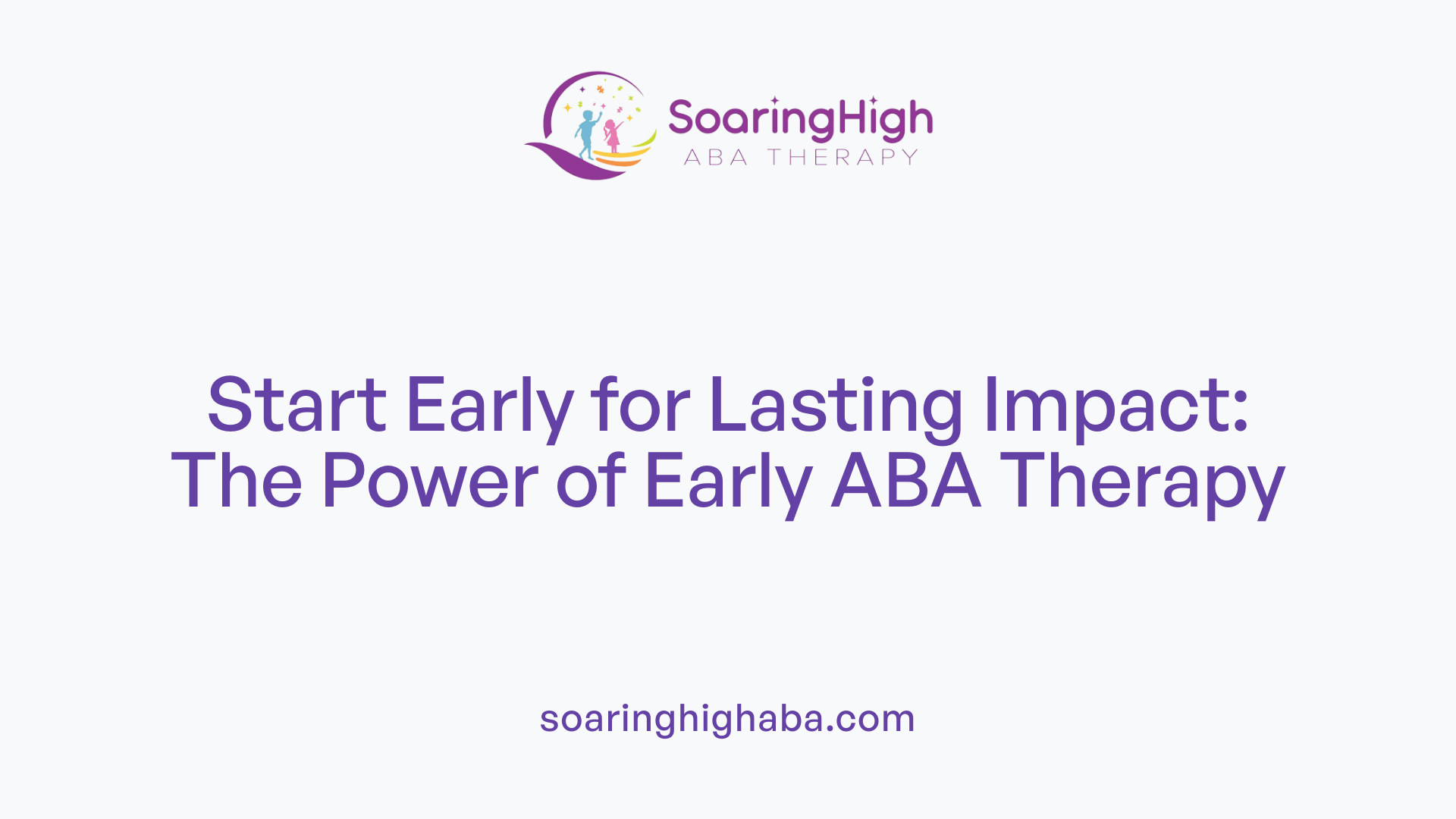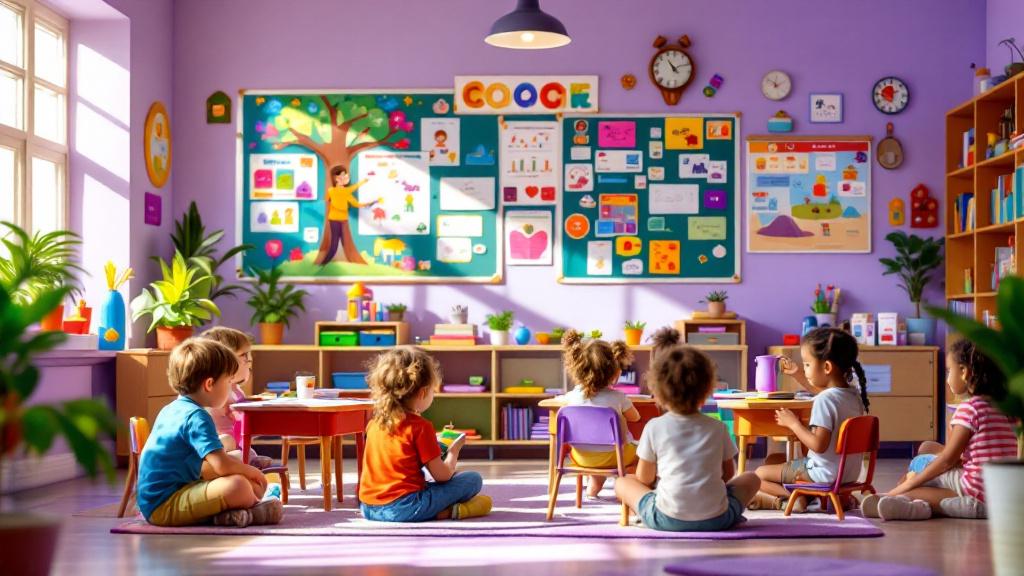Understanding ABA Therapy’s Role in Development
Applied Behavior Analysis (ABA) is a scientific, evidence-based approach widely recognized for supporting children with autism spectrum disorder (ASD). At its core, ABA emphasizes tailored interventions that foster emotional regulation and social competence. This article explores how ABA therapy integrates assessment, collaborative strategies, visual supports, and reinforcement to aid children in developing essential life skills, ultimately fostering independence and improving their quality of life.
Initial Assessment and Personalized Goal Setting

How does ABA therapy support emotional regulation?
ABA therapy plays a significant role in helping children develop emotional regulation skills. The process begins with a thorough assessment to identify the child's strengths, challenges, and specific communication needs. This assessment guides the creation of tailored goals and strategies designed to support the child's emotional development.
A core element in ABA is teaching children to recognize and understand their emotions. Therapists utilize visual aids, such as emotion charts and social stories, to make feelings more accessible and understandable. These tools help children identify and label their emotions, a crucial first step toward self-regulation.
In addition to visual supports, ABA incorporates targeted activities that promote the use of positive coping strategies. For example, children are taught techniques like deep breathing or using calming tools through role-playing and practice in therapy sessions. These methods help children manage overwhelming feelings such as frustration, anger, or anxiety.
Creating opportunities for practice is essential. ABA emphasizes modeling calm, controlled behavior and validating children's emotions, which encourages them to express their feelings openly and learn appropriate ways to handle them. This consistent reinforcement across settings increases the likelihood that children will generalize these skills outside therapy.
Caregiver involvement is also critical. Parents and teachers are trained to apply similar techniques, providing a cohesive environment for emotional regulation to flourish. Monitoring progress through data collection ensures that strategies are effective and can be adjusted as needed.
Overall, ABA combines behavioral techniques, visual supports, and caregiver coaching to foster emotional awareness and self-control. This comprehensive approach not only reduces problematic behaviors but also empowers children to navigate their emotional worlds more effectively, promoting social interaction and long-term independence.
Communication Techniques and Parental Training
 In ABA therapy, parents play a vital role in supporting their child's communication development. Training programs for parents teach effective communication techniques, encompassing clear language, visual supports, and positive reinforcement strategies.
In ABA therapy, parents play a vital role in supporting their child's communication development. Training programs for parents teach effective communication techniques, encompassing clear language, visual supports, and positive reinforcement strategies.
Parents learn to communicate in simple, direct sentences that match their child's comprehension level. Visual supports such as picture cards, communication boards, and speech-generating devices are introduced to help children understand and express their needs more easily.
Positive reinforcement remains a cornerstone, where parents are guided to praise and reward successful communication efforts. This encouragement helps motivate the child to use new skills consistently.
During training, parents also learn how to implement consistent strategies at home that align with those used in therapy sessions. This consistency ensures better generalization of skills across different environments.
Focusing on emotional regulation, ABA employs various techniques to teach children how to manage their feelings. Visual tools like feelings charts and social stories aid children in recognizing and labeling emotions.
Role-playing, modeling, and discrete trial training are practical exercises used to develop emotional regulation. These activities help children learn appropriate responses, such as deep breathing or using calming tools, when experiencing strong emotions.
Positive reinforcement and differential reinforcement strategies strengthen these behaviors, with therapists and parents collaboratively tracking progress through data collection. This ongoing monitoring allows for tailored adjustments to fit each child's needs.
To promote skill generalization, environmental modifications and self-monitoring tools are employed. These methods help children learn to regulate emotions effectively across various settings, from home to school.
| Technique | Description | Purpose |
|---|---|---|
| Visual supports | Picture cards, social stories, feelings charts | Help children identify emotions and communicate needs |
| Positive reinforcement | Praise, rewards, praise for successful attempts | Encourage continued use of communication and regulation skills |
| Role-playing | Simulated scenarios to practice emotional responses | Teach appropriate reactions to emotional triggers |
| Data tracking | Recording progress to guide adjustments | Ensure effective, individualized strategies |
| Environment modifications | Changes to surroundings to reduce stressors | Support emotional regulation in natural settings |
By combining these strategies, ABA helps children build robust communication and emotional regulation skills, promoting independence and long-term success.
Enhancing Social Skills through Structured Interventions
How does ABA therapy enhance social competence?
ABA therapy plays a pivotal role in improving social skills for children with autism by using targeted, evidence-based strategies that address specific social challenges.
One of the main approaches involves teaching children how to initiate and respond appropriately during social interactions. Therapists break down complex social behaviors into smaller, manageable steps, creating individualized programs that fit each child's needs. These programs often include visual supports, such as picture cards or social stories, to help children understand social cues and expectations.
Rehearsals and role-playing are integral techniques used in ABA sessions. Through these activities, children practice social responses in a safe and controlled environment. For example, they might simulate greeting a peer or sharing toys, gaining confidence and competence.
Positive reinforcement is used to motivate children when they demonstrate successful social behaviors. This reinforcement could include praise, rewards, or access to preferred activities, encouraging children to repeat positive interactions.
ABA therapists also incorporate video modeling and social narratives, which serve as visual aids to teach social norms, eye contact, and appropriate communication cues. Repeated practice in therapy, combined with real-world application at school and home, helps children generalize these skills across different settings.
Collaboration with parents and teachers is essential to ensure consistency and reinforcement outside therapy sessions. This comprehensive approach fosters social understanding and responsiveness, vital for building peer relationships and boosting social confidence.
In sum, ABA therapy enhances social competence by providing structured, measurable, and supportive methods that teach children how to interact effectively, understand social cues, and develop meaningful relationships.
Impact on Developmental Skills and Functioning
ABA therapy plays a crucial role in enhancing various developmental skills, particularly in areas related to emotional and social functioning. The approach begins with a comprehensive assessment that identifies a child's strengths and challenges, guiding tailored goals and strategies. Through individualized interventions, ABA helps children improve their communication abilities, which are fundamental to social integration.
One of the primary focuses of ABA is to foster social interaction skills. Therapists work with children to learn engaging appropriately with peers, understanding social cues, and participating in group activities. This progress is supported by consistent reinforcement of positive behaviors, helping children build meaningful relationships.
Emotional understanding is another vital area influenced by ABA. Children are taught to recognize and manage their emotions through techniques like talking about feelings and calming strategies. This not only reduces problematic behaviors such as outbursts but also encourages emotional resilience.
Developing self-regulation is particularly important, as it enables children to control reactions to intense feelings like frustration or anger. ABA incorporates direct teaching methods involving caregivers, teachers, and professionals like speech and occupational therapists. These strategies promote self-awareness, sensory processing, and coping skills, all of which contribute to better daily functioning.
Overall, research confirms that ABA’s structured and evidence-based methods result in improved social skills, emotional responses, and independence. Children learn to think before acting, resist impulsive behaviors, and pursue long-term goals, leading to better adaptive functioning in school, at home, and within the community.
| Skill Area | ABA Strategies | Expected Outcomes | Additional Notes |
|---|---|---|---|
| Communication | Individualized goals, visual supports | Enhanced expressive and receptive language | Using picture cards, communication devices |
| Social Interaction | Role-playing, social stories | Improved peer engagement and understanding | Generalization across settings |
| Emotional Understanding | Emotional labeling, calming techniques | Better emotion regulation and awareness | Reduces problematic responses |
| Self-Regulation | Stress management, modeling | Increased impulse control, patience | Key to independence |
Overall, ABA’s targeted efforts provide children with autism the tools necessary for emotional stability and social competence, opening pathways for increased participation and happiness in daily life.
Evidence Supporting ABA’s Effectiveness
What is the evidence supporting the effectiveness of ABA therapy in improving emotional and social skills?
Research consistently demonstrates that Applied Behavior Analysis (ABA) significantly improves emotional and social capabilities in children with autism spectrum disorder (ASD). Studies show that ABA’s structured approach, which involves breaking down complex behaviors into smaller, teachable steps and using positive reinforcement, results in noticeable improvements in communication, social interaction, and emotional regulation.
Early intervention is particularly impactful. When ABA therapy begins by age 3, children often develop essential social skills such as sharing, taking turns, initiating conversations, and understanding social cues more effectively. These skills are critical for social integration and daily functioning.
Using evidence-based strategies, ABA promotes the development of both verbal and non-verbal communication, helping children express themselves and interpret others' emotions. Family involvement ensures that reinforcement and learned behaviors are consistent across settings, supporting long-term social-emotional growth.
Overall, the research validates ABA as a core treatment that not only enhances emotional and social skills but also fosters greater independence in individuals with ASD, setting the foundation for better quality of life.
| Evidence Type | Findings | Additional Details |
|---|---|---|
| Research Studies | Show improvements in social and emotional skills | Quantitative data from multiple scientific experiments |
| Early Intervention | Amplifies skill development | Starting therapy early optimizes neural plasticity |
| Parent and Teacher Reports | Confirm behavioral gains | Consistent feedback across environments |
| Long-Term Outcomes | Increased independence | Reduced need for additional services |
This body of evidence underscores that ABA therapy, when tailored to individual needs, can lead to meaningful and lasting improvements in the social and emotional wellbeing of children with autism.
Role of Data Collection and Progress Monitoring
ABA therapy relies heavily on detailed data collection and analysis to guide effective treatment. This systematic approach allows therapists to track a child's behaviors, emotional responses, and social skills with precision. Regularly assessing these metrics helps identify what strategies are working and highlights areas where adjustments are needed.
By continuously monitoring progress, therapists can fine-tune interventions to better suit each child's unique developmental journey. This flexibility is crucial for addressing evolving needs and promoting meaningful skill acquisition.
Sharing data with parents and school staff fosters a collaborative environment. When educators and caregivers are informed about progress, they can implement consistent strategies across settings. This consistency supports the generalization of social and emotional skills, helping children apply what they learn in various situations.
Recording and analyzing progress ensures that interventions remain targeted and effective. It supports emotional and social development by providing a clear picture of growth and challenges, which is vital for achieving lasting improvements. The collaborative, data-driven approach of ABA enhances the likelihood of children developing independence and resilience in their daily lives.
Supporting Generalization and Maintenance of Skills

How does ABA promote skill generalization and maintenance?
Applied Behavior Analysis (ABA) emphasizes the importance of helping children apply learned skills across different settings and maintain these skills over time. This process begins with strategic environmental modifications to ensure that the child can transfer what they learn in therapy to real-world situations.
One effective method involves varying teaching contexts. For example, if a child learns communication skills in a clinical setting, therapists will also practice these skills at home, in school, and in community settings. This variety helps children understand that these skills are useful everywhere, not just during therapy sessions.
Using multiple exemplars is another strategy. Children are exposed to diverse examples of a skill—such as different people, objects, and environments—to encourage adaptable understanding and application.
Involving natural settings like the home and school allows for consistent reinforcement and practice, which solidifies behaviors. For instance, teachers and parents work together to implement similar prompts and rewards, promoting continuity across environments.
Self-monitoring tools are also integral. These may include visual cues, checklists, or digital apps that encourage children to recognize when they are using a skill correctly and when they need to try again. These tools help foster independence, as children learn to self-regulate and reinforce their own progress.
Reinforcement schedules are carefully designed to be applied consistently across different settings. This consistency ensures that the child’s desired behaviors are strengthened and maintained over time, even when new challenges or distractions arise.
Regular practice across varied environments supports emotional and social adaptation. This approach helps children become more resilient and confident in their ability to navigate daily life, fostering long-term independence.
What methods does ABA use to ensure skills stick around over time?
ABA techniques include consistent reinforcement, environmental variation, and active involvement from caregivers and teachers. These strategies together ensure that skills are not only learned but continue to be evident long after therapy ends.
Modeling Calm Behavior and Emotions

How does ABA therapy support emotional regulation?
ABA therapy plays a significant role in helping children with autism improve their emotional regulation skills. It focuses on teaching children to recognize and understand their own emotions through the use of visual aids like social stories, picture cards, and other visual supports. These tools help children identify feelings such as frustration, excitement, or anger in a clear, concrete way.
Therapists employ targeted activities to reinforce positive coping strategies. For instance, deep breathing exercises, the use of calming tools, and role-playing scenarios help children learn how to manage overwhelming emotions. Such techniques are practiced regularly, especially in structured sessions, so children can transfer these skills to everyday situations.
In addition to teaching specific skills, ABA emphasizes the importance of modeling calm behavior. Therapists and caregivers serve as role models by demonstrating composed reactions during challenging moments. When children observe adults managing emotions calmly, they often imitate these responses.
Validation of feelings is another crucial component of ABA. Acknowledging that emotions are valid encourages children to express their feelings without fear of judgment. This validation helps build emotional awareness and reduces frustration that can lead to problematic behaviors.
Overall, ABA combines behavioral strategies, visual supports, and active caregiver involvement to foster emotional understanding and self-control. By creating a consistent, supportive environment where children see calm responses and feel their emotions are respected, ABA helps lay the foundation for better emotional regulation, which is essential for reducing problematic behaviors and promoting overall well-being.
Multidisciplinary Approach for Emotional and Social Development
Collaboration with educators, therapists, and families
A comprehensive strategy for supporting children’s emotional and social growth involves teamwork among various professionals, educators, and families. Behavior analysts (ABA therapists) work closely with teachers and school staff to create consistent strategies across home and school environments. This collaboration ensures that communication and social skills are reinforced in all settings, promoting stability and progress.
Parents also receive training in effective communication techniques, such as using visual supports and positive reinforcement, which they can apply consistently at home. This unified approach helps children develop better emotional understanding and social interactions.
Holistic development through targeted interventions
Supporting emotional self-regulation is a crucial part of this process. Children learn to manage reactions to emotions like frustration, anger, or excitement. Since kids do not possess innate self-regulation skills, specialized instruction from professionals such as occupational therapists, speech-language pathologists, and school psychologists is vital.
Interventions focus on developing self-awareness, emotional intelligence, and coping mechanisms. For example, teaching calming techniques, discussing emotions, and modeling self-regulation are effective strategies. These efforts help prevent problematic behaviors like outbursts and encourage independent emotional control.
Integrating social-emotional skills into daily routines
The goal of these collaborative efforts is to foster improvements in social relationships, daily functioning, and overall emotional well-being. Early, intensive ABA therapy—often beginning before age 3—serves as a foundation, emphasizing the importance of teamwork and consistent strategies.
By integrating positive reinforcement, visual supports, and functional communication training, children build vital skills that support independent living and social success. With ongoing data collection and analysis, professionals continually refine approaches to meet each child's evolving needs.
| Aspect | Approach | Responsible Parties | Focus Area |
|---|---|---|---|
| Communication | Use of visual supports & devices | ABA therapists, speech-language pathologists | Expression & comprehension |
| Emotional Regulation | Teaching calming techniques & emotional discussions | Occupational therapists, counselors, teachers | Self-awareness & stress management |
| Social Skills | Promoting generalization across settings | Teachers, family members | Peer interactions & social context |
| Data-Driven Adjustments | Monitoring progress & adapting methods | All involved professionals | Effectiveness & tailored interventions |
This collaborative, holistic approach ensures that children develop essential emotional and social skills needed for a successful, independent life.
Early Intervention and Long-term Benefits
 Starting ABA therapy early, particularly before the age of 3, can significantly influence a child's developmental trajectory. Early, intensive intervention allows therapists to tailor strategies that target foundational skills such as communication, social interaction, and emotional regulation.
Starting ABA therapy early, particularly before the age of 3, can significantly influence a child's developmental trajectory. Early, intensive intervention allows therapists to tailor strategies that target foundational skills such as communication, social interaction, and emotional regulation.
Research shows that children who begin ABA therapy at a young age tend to make greater gains in these areas. The therapy's individualized approach helps children develop socially appropriate behaviors, understand their emotions, and learn how to manage reactions to various stimuli.
The structured environment of ABA, combined with techniques like positive reinforcement and visual supports, encourages children to practice and solidify skills across different settings. This consistency supports the generalization and maintenance of behaviors, enabling children to apply what they learn at home, school, and in community settings.
Long-term, early ABA intervention can lead to improved independence, better social connections, and reduced problematic behaviors. These benefits enhance a child's ability to participate fully in daily life, including attending school and building peer relationships.
Overall, initiating ABA therapy early offers the best opportunity for children with autism spectrum disorder to develop critical life skills and achieve a more fulfilling, autonomous future.
Conclusion: Building a Foundation for Future Growth
Applied Behavior Analysis (ABA) offers comprehensive benefits for children with autism, focusing on developing communication, social, and daily living skills. Through personalized assessments and targeted interventions, ABA helps children learn to express themselves effectively, reducing problematic behaviors and promoting independence.
A core part of ABA is teaching functional communication and supporting emotional self-regulation, both crucial for children's overall development. Using visual supports, augmentative devices, and positive reinforcement, ABA makes learning accessible and engaging. Additionally, data collection ensures interventions remain effective and adaptable, with continuous updates based on progress.
Effective collaboration among parents, teachers, and therapists ensures consistent support across different settings. This teamwork promotes the generalization of skills, making improvements more lasting and meaningful.
Ongoing support strategies include early intervention, intensive therapy schedules, and active parental involvement. These strategies are vital for nurturing emotional intelligence, managing stress, and emphasizing social-emotional skills. By laying this strong foundation, ABA empowers children with autism to thrive academically, socially, and emotionally, paving the way for future successes.
Fostering Independence and Lifelong Skills
Through targeted strategies, collaborative efforts, and data-driven practices, ABA therapy provides a robust framework for children to develop emotional regulation and social competence. These skills form the foundation for lifelong independence, meaningful relationships, and participation in community life. Continued support and ongoing intervention are vital to maintaining and building upon these gains, ensuring children can navigate the complexities of social and emotional landscapes confidently and resiliently.
References
- How can ABA be used in conjuction with parents and ...
- 18 IEP Goals for Self-Regulation Skills or Emotional ...
- Find Autism Therapists and Psychologists in Elkton, FL
- How to Teach Social Skills Using ABA Principles
- Social Skills Training in Applied Behavior Analysis? ASD
- Developing Social Skills Through ABA Therapy for Autism
- The effectiveness of applied behavior analysis program ...
- Enhancing Social Skills Through ABA Therapy
- The effectiveness of applied behavior analysis program ...





































































































